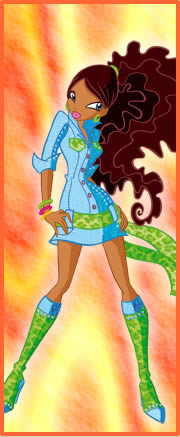|
| Moving bodies, moving souls! |
Hi girls!

The name "Contemporary Dance" describes a range of techniques and styles used in classes, workshops and dance choreography. Contemporary dance was developed in the early 20th century as a reaction against the rigid techniques of ballet. Pioneers such as Isadora Duncan and Martha Graham searched for ease of movement using the body's natural lines and energy, allowing a greater range and fluidity of movement than conventional dance techniques.
Contemporary dance is characterised by its versatility: contemporary can be danced to almost any style of music, or united with other dance forms to create new styles of movement. Contemporary seeks to work with the natural alignment of the body, and is therefore safe and accessible for beginners. At the same time, the ease of movement promoted by contemporary dance technique allows experienced dancers to push new boundaries of body movement.
The four main techniques used in contemporary dance are:
· Cunningham (named after teacher and choreographer Merce Cunningham, focusing on the architecture of the body in space, rhythm and articulation.)
What does that mean? Cunningham uses the idea of the body's own "line of energy" to promote easy, natural movement. Richard Alston uses Cunningham technique in his graceful choreography.
· Graham (named after Martha Graham) - focusing on the use of contraction, release, fall and recovery.
What does that mean? Graham technique is characterised by floorwork and the use of abdominal and pelvic contractions. The style is very grounded and the technique visibly contrary to the sylphlike, airborne ideals of ballet.
· Limon (named after Jose Limon) - exploring use of energy in relation to gravity and working with weight in terms of fall, rebound, recovery and suspension.
What does that mean? Limon technique uses the feeling of weight and "heavy energy" in the body, and movement is instigated using breath to lift, and swings through the body to create and halt movement. It also feels very nice to perform!
· Release - placing emphasis on minimising tension in the search for clarity and fluidity and efficient use of energy and breath.
What does that mean? A bit like it sounds - in Release technique, we release through the joints and muscles to create ease of movement, releasing the breath to aid the release of the body. A great relaxation technique as well as a dance style.
Improvisation
Improvisation focuses on the investigation of movement and its relation to performance. Development of individual movement material is facilitated through a variety of creative explorations.
Contact Improvisation
Contact improvisation describes a duet dance form characterised by weight exchange, fluid movement and touch. Partners improvise using the natural movement of the body.
Choreography
Choreography workshops are designed to encourage personal investigation into ideas suitable for choreography. |
|
|

